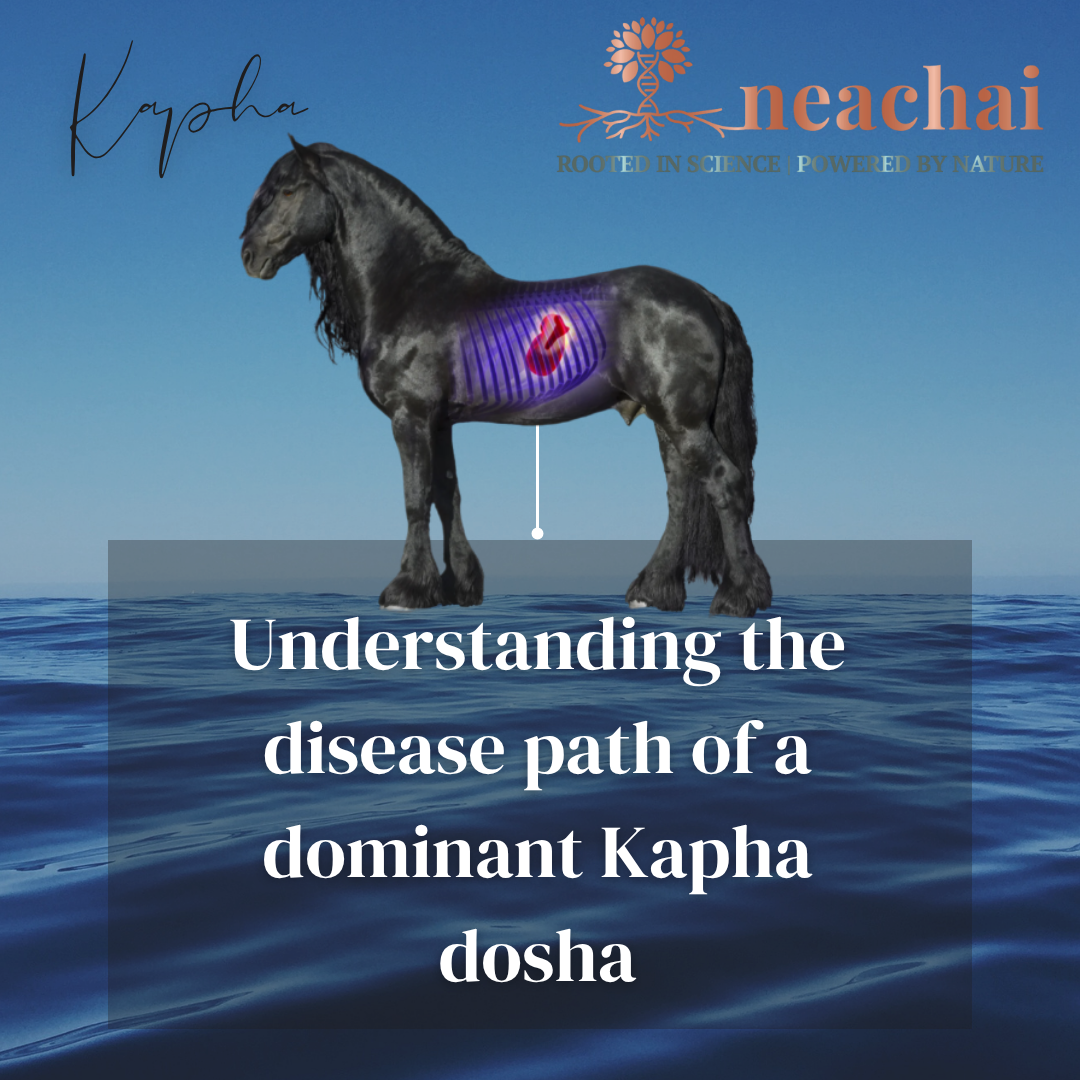The last part in the series of disease pathology is for Kapha dosha. Of the four elements of matter, Kapha is considered Earth and Water. Those with this constitution will possess qualities of moist, cool, heavy, oily, liquid, dull, sticky, dense, smooth and stable.
Physically, a kapha is larger boned (think big warmblood or draft breed although breed is not specific to a dosha). They will have big beautiful soulful eyes with shiny lush coats and solid hooves.
A kapha personality is wonderful! “teddy bear” type who is kind and gentle, will try their hearts out with just a little splash of saucy. They prefer to stay in their comfort zone and strive for consistency where change does not come often.
Although the word “kapha”seems a simplistic term, it actually represents a series of internal processes in the body that function based on the qualities of “kapha”.
The main seat of Kapha is in the stomach (smooth and stable), the head and chest; heart,lungs, brain and sense organs (fluid). Its function is also present in trachea, lymph, plasma, adipose tissue, nose and tongue and joints. Kapha is the the “glue” that binds and nourishes the cells, organs and tissues called interstitial fluid. Kapha is also present as bronchial secretions, lymphatic secretions and synovial fluids.
So what does a kapha horse look like out of balance?
-
Gains weight easily
-
Sluggish digestion
-
Prone to sinus and respiratory issues
-
Lethargy and depression
-
Anxiety and spookiness at normal everyday things that have been seen before
-
Dull coat and eyes
-
Loss of appetite
-
Stocking up in legs
-
Swelling in lymph nodes throughout body especially jaw line
-
Excessive salivation
Each dosha in Ayurveda exhibits a distinct pattern of disease expression, which is why the protocols designed to balance them are highly specific and aimed at addressing root causes rather than merely alleviating symptoms. This targeted, foundational approach is one of the key reasons Ayurveda is such a revered medical science.
For Kapha dosha, the disease process typically begins in the stomach. Nutritional choices that increase the dosha's cold and heavy qualities can lead to sensations of fullness, sluggishness, and a diminished appetite. At this early stage, the imbalance is still confined to the gastrointestinal tract.
If no corrective action is taken, the next phase involves the accumulation of Kapha, leading to systemic congestion. This results in impaired nutrient distribution and may manifest as congestion in the skin’s surface layer, lymphatic stagnation, and capillary or venous sluggishness. Symptoms can include the presence of white, frothy mucus and excessive salivation. Without proper movement or metabolic stimulation, the mucus thickens and begins to accumulate in deeper connective tissues and subcutaneous layers.
As the disease progresses, it begins to affect the blood tissue, or Rakta dhatu, which originates in the liver and spleen. At this stage, clinical signs may include splenic enlargement, anemia, fatty liver changes, and localized edema, particularly around the lymph nodes and joints.
When Kapha spreads into the Mamsa dhatu (muscle tissue), symptoms might include nasal crusting, muscle hypertrophy, fibrotic changes, and the buildup of excessive tartar on the teeth. As it moves deeper into the Meda dhatu (fat tissue), signs of imbalance include obesity and difficulty losing weight. In humans, this may also present as a flat chest, disproportionately heavy thighs, and an increased likelihood of developing gallstones.
The final stages of Kapha imbalance impact the Asthi dhatu (bone tissue) and the Majja dhatu (bone marrow and nervous system). At this level, signs of endocrine disruption, such as hypothyroidism and glandular dysfunction, become evident. Swelling in the bones and joints may occur, along with the development of osteomas, joint effusions, bone spurs, spinal misalignments, and calcium loss from bone structures.
The concept of doshas and their biological effects can seem complex, but the key principle to remember is that 'like increases like' and 'opposites create balance.' Early stages of disease can often be corrected through genetically appropriate nutrition and mindful environmental management.

